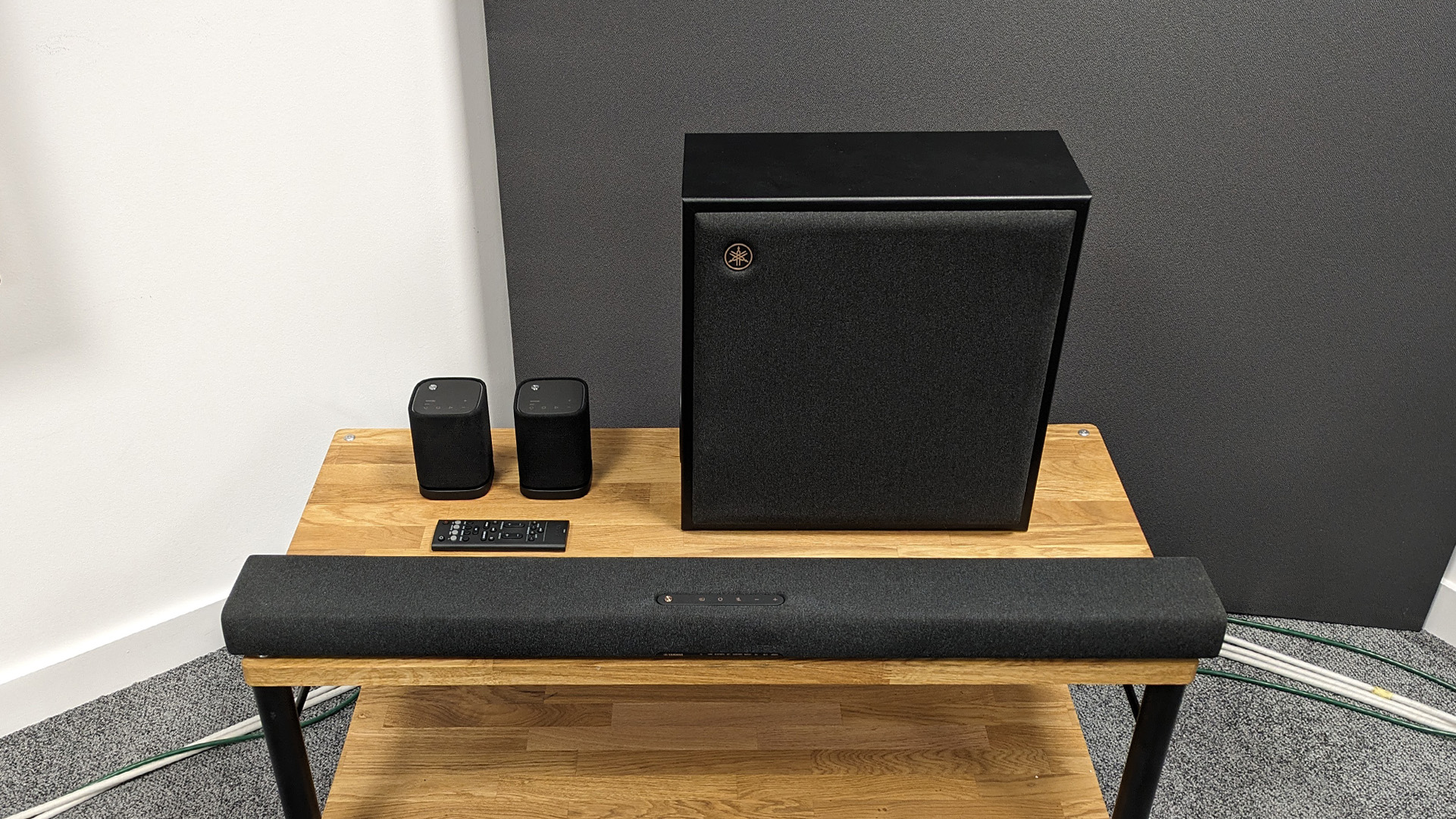
As television panels get thinner, the space for proper drivers that can deliver a high-level audio performance decreases. Manufacturers are constantly developing new ways to enhance their TV’s built-in speaker capabilities, but it’s generally best to let the screen handle visuals and delegate audio responsibilities elsewhere.
Dolby Atmos-compatible 'soundbar plus subwoofer' packages are not uncommon and present a great way to improve the sound of your favourite shows, movies and games, but despite increasingly clever virtual surround processing, they can't produce sounds to the side and behind the seating position in the way that a full surround system can. Now, though, bundles that also include a pair of surrounds with the bar and sub are becoming increasingly popular, and one such system is the Yamaha True X – at least in the configuration in which we are testing it.
Price
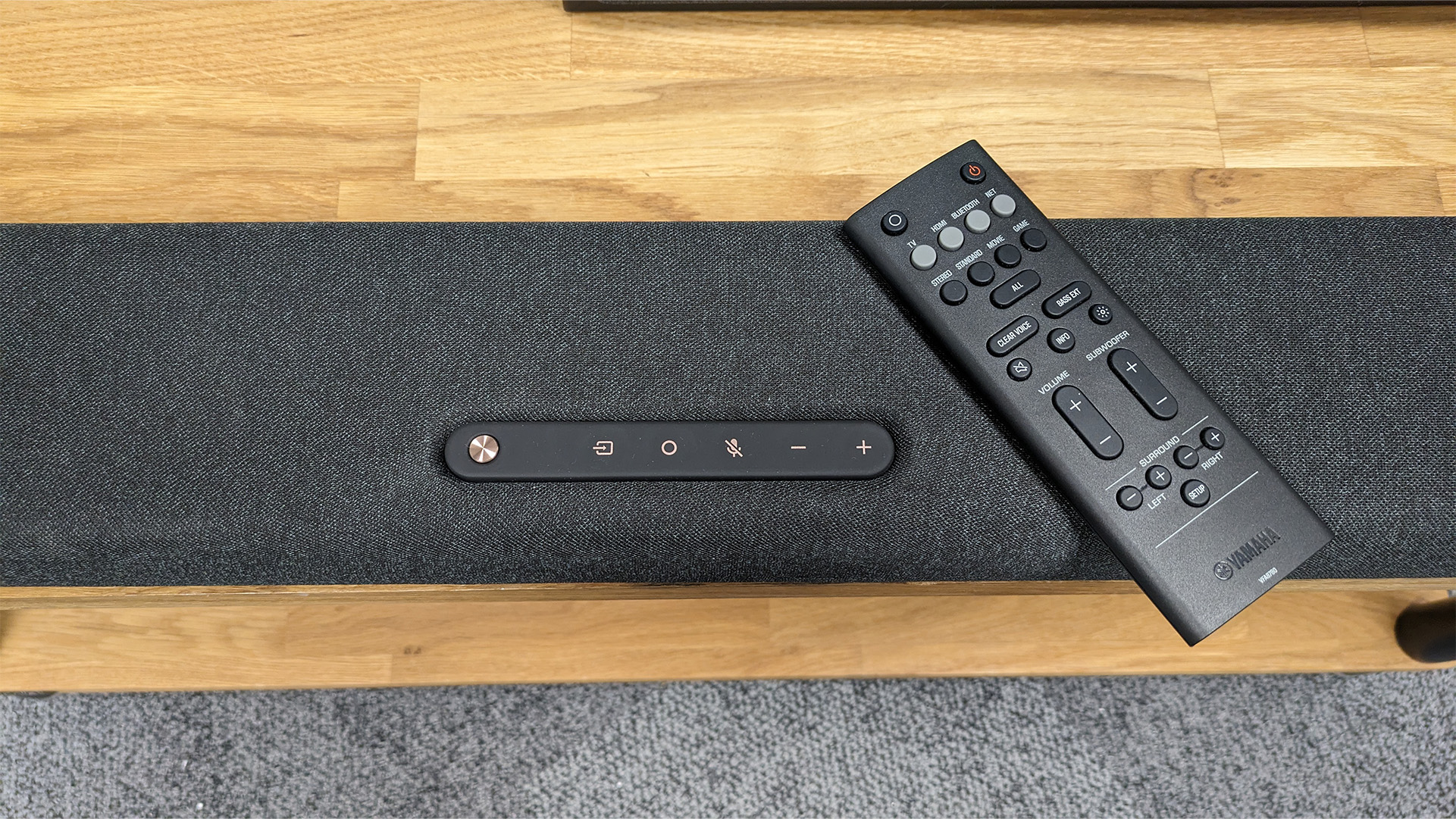
In the UK and US, the Yamaha True X soundbar can be bought on its own as the True X 40A (£540 / $450) or as a True X 50A bundle with a subwoofer (£799 / $599). It is also available in the UK, US and Australia as a complete surround package that also includes a pair of WS-X1A wireless speakers for a total cost of £1099 / $949 / AU$1599, and that is how we are primarily testing the system.
For reference, some top standalone soundbars such as the Sennheiser Ambeo Soundbar Plus cost £1299 / £1499 / AU$2159, while the Sony HT-A7000 is priced at £1199 / $1199 / AU$1599. The Samsung Q990C soundbar package, which also contains wireless surrounds and a subwoofer, nominally costs £1399 / $1399 / AU$1499 but has now reached the end of its life so is currently available for much less.
It’s also worth considering the Sonos Beam Gen 2, which is available solo for around £450 / £499 / AU$799 and as part of an 'Immersive Set' that also includes the Sub Mini and a pair of Era 100 speakers for a total price of £1281 / £1286 / AU$2181.
Build

The soundbar in this system is an attractive unit, measuring just over 101cm in width. Its sleek, rounded surface is almost entirely covered in a subtle grey fabric, save for two small strips on the front and top of the bar. It’s a nice unreflective look that promises not to distract from what’s on-screen.
The top strip is where you’ll find some basic controls such as the power and volume buttons, while the strip on the front of the bar features LED indicators to show the selected source or volume level. While these strips look tidy, they are difficult to read from any reasonable distance, so unless you memorise what each represents, you’ll have to walk over to the bar to check. These indicators also show the volume level, but it only changes in multiples of five. Thankfully, you can instead use an app to control the soundbar – more on this later.
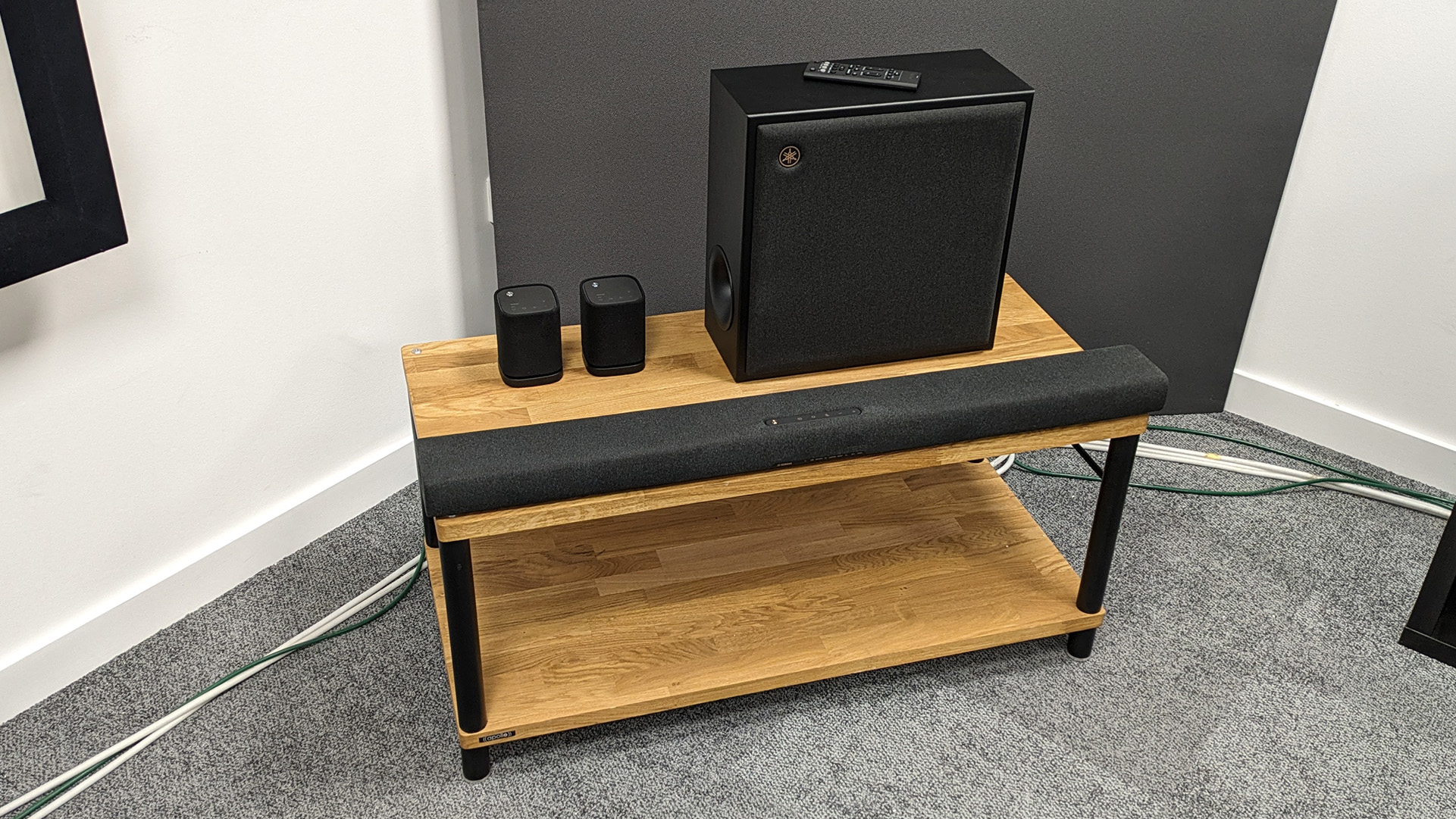
Connectivity HDMI out ( with eARC/ARC), 1x HDMI input, optical, wi-fi, Bluetooth 5.0
Format support Dolby Atmos
Streaming Spotify Connect, Tidal Connect, Airplay 2
Voice control Amazon Alexa
Soundbar dimensions (hwd) 6.3 x 102 x 11cm
Soundbar weight 3.9kg
Surround speaker dimensions (hwd) 11 x 8.8 x 8.8cm
Surround speaker weight 0.5kg
Subwoofer dimensions (hwd) 41 x 18 x 41cm
Subwoofer weight 9.4kg
The bar houses six drivers in total. There are two 46 x 66mm forward-firing racetrack drivers on the face of the bar. On top, there are two 52mm upward-firing, angled height drivers alongside a pair of 75mm ported bass drivers. The latter are placed towards the centre of the bar to help with low-end projection, especially if a subwoofer is not in play.
The subwoofer itself measures just over 40cm in height and depth and contains a 16cm drive unit. It matches the style of the bar nicely, featuring a smart-looking grille adorned with a Yamaha logo on the driver's side, made of the same fabric found covering the soundbar.
Each surround speaker houses a 55mm full-range driver, alongside two passive radiators. They are rechargeable speakers, offering around 12 hours of playback from a full three-hour charge. Each speaker will set itself to ‘Surround’ mode when synced with the other components, however, they can be switched to ‘Solo’ for use as standalone Bluetooth speakers.
As with most modern soundbars, the True X is designed to connect to your TV via HDMI eARC, but there is also a dedicated HDMI input so that a source device can be routed through the soundbar. This passthrough functionality only supports 4K/60Hz, which will disappoint hardcore gamers, but it won't be a concern for anyone else. There’s also an optical input, an ethernet port, and a USB port for firmware updates. Everything is easy to access and the cables don’t tend to interfere with one another, which is always appreciated.
Features
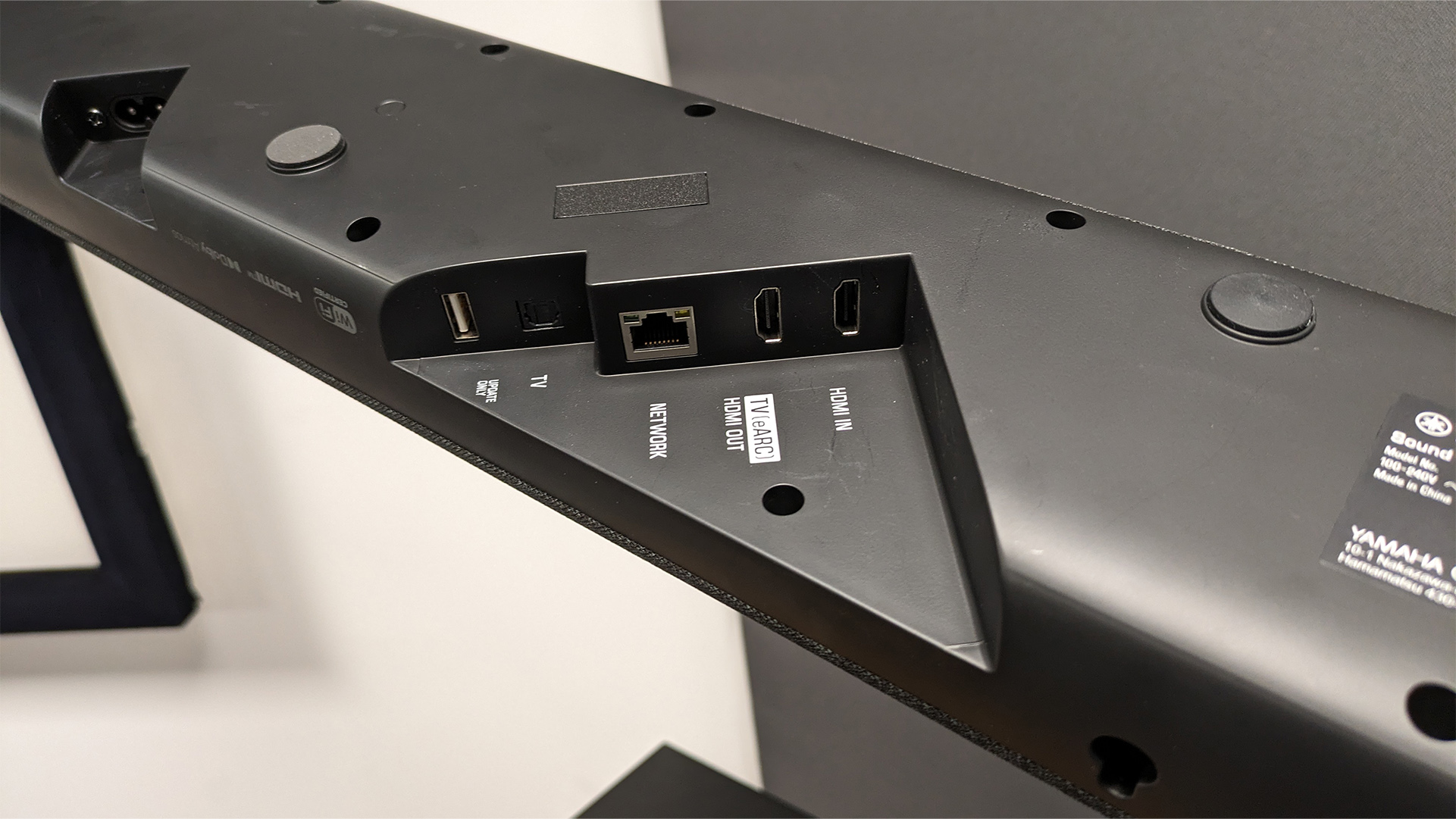
Setting up the system is quick and easy. The subwoofer powers up when plugged into an active mains socket, while the bar and surround speakers feature power buttons for manual activation. Once everything is up and running, simply press the ‘setup’ button on the remote control and the separate components should quickly synchronise.
You can also use the remote to switch between the soundbar's four sound modes, which change the audio performance drastically. First up is stereo, which disengages the surround speakers, followed by Standard, which Yamaha describes as being clear, audible, and suited to a wide range of content, such as general TV programmes, dramas, and sports. The third preset is Movie, which Yamaha says adjusts the texture and volume of bass and tunes the surround and height channels to give a more expansive feeling of space. Finally, there's a Game mode, which isolates specific sounds and sonic elements so that they are easier to pinpoint directionally, which could be ideal if you’re playing games that require a high level of positional awareness.
Movie mode is our preferred choice when it comes to watching movies, as it feels more spacious and natural than Standard mode, which doesn’t quite wrap around you in the same way. However, for music, Stereo mode is generally more focused and punchier.
You can access a few other features via the remote, such as Clear Voice and Bass Extension, which toggle on or off. Clear Voice does what you would expect, making speech louder, but it also adds a hard edge to the midrange so we prefer to leave it switched off. Bass Extension works well with the sub, adding a noticeable and pleasing boost to the low-end. However, when we switch it on using just the soundbar, the overall sound ends up too thick, so we prefer to disengage this when the sub is not connected.
As is often the case with soundbars, the app is the best way to take control of the system. The Yamaha Sound Bar Controller app that we use to control this system is simple to navigate and is generally easier to use than the remote on account of the aforementioned issues with the soundbar’s basic LED display. The app will tell you the exact volume of each component in the system, as well as whether settings such as Clear Voice are active. You can also use the app to play audio via mobile streaming apps such as Spotify and Tidal.
Sound
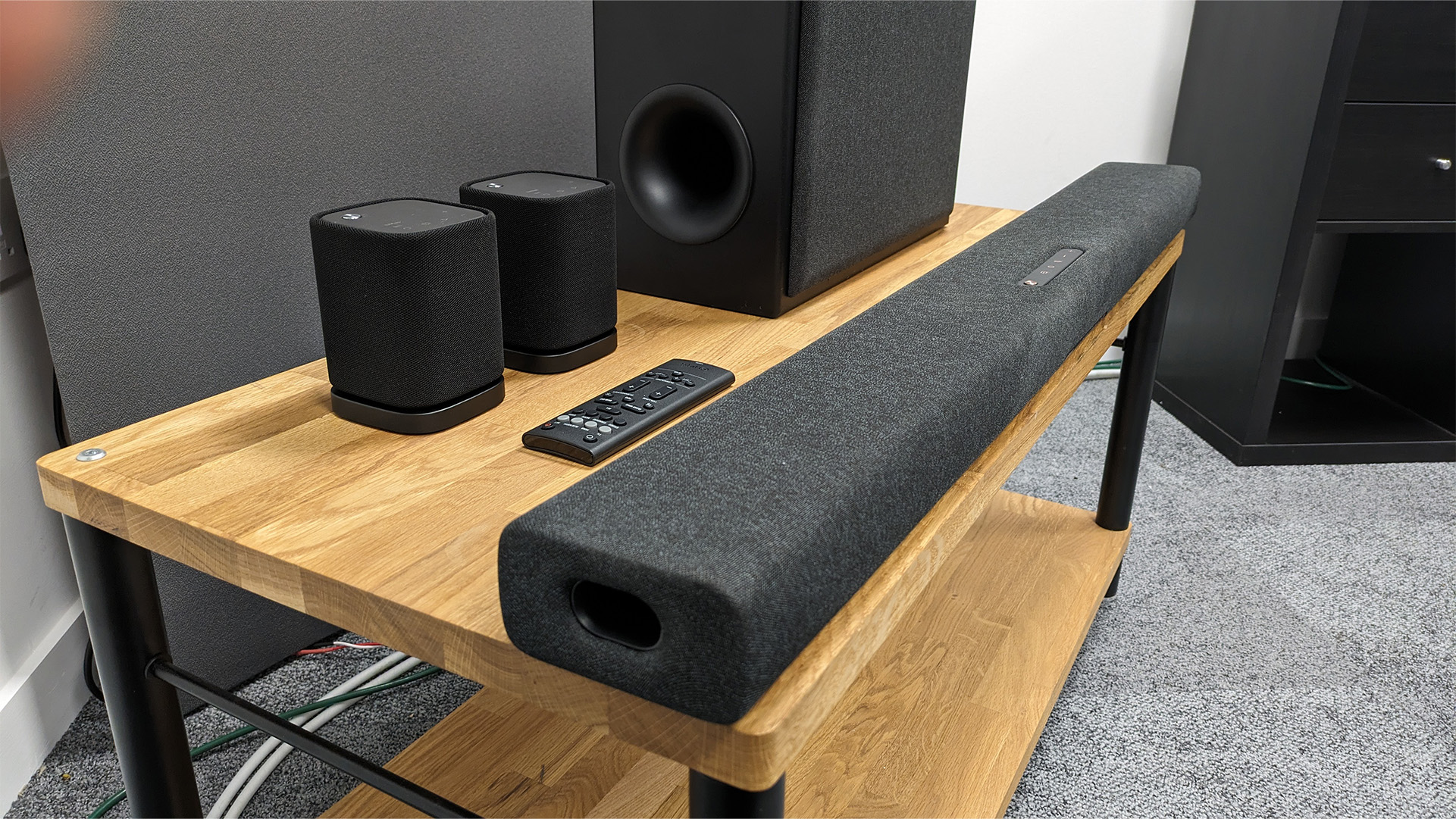
We start off our testing with the opening scene from Drive. The low, pounding heartbeat-like pulse as The Driver navigates the city carries weight and tension without sounding overblown or completely detached from the rest of the audio. The subwoofer plays a vital part in this, and we find it’s best to position the sub as close to the soundbar as possible to help integrate the overall sound.
We switch over to 2016’s live-action adaptation of The Jungle Book, where several scenes are great for testing detail and spatial movement. Kaa’s voice in The Jungle Book contains several layers, some adding a serpentine hiss. The surround speakers give a nice sense of spatial movement to these layers as Kaa moves around the scene and hisses with a high-end sizzle that adds an ominous eeriness.
Despite being small units, the surround speakers manage to match the timbre and character of the soundbar, so when audio ‘moves’ around the scene, it doesn’t noticeably shift in tone. They do lose some composure when the volume is increased, but this is rarely an issue when the speakers are used as surrounds. Should you choose to use one of the surrounds as an independent Bluetooth speaker, you will find it sounds good for a small unit, offering a decent amount of energy and insight.
However, we suspect that most people will primarily use them for surround duties, and because they are small and rechargeable, they are easier to place than some alternatives and offer the flexibility of positioning that other mains-operated units don’t. If positioned with care, they help create a seamless soundfield and merge well with the soundbar at the front. We positioned ours slightly behind our seating position, with the drivers aiming towards the centre of the sofa.
While the surrounds add an impressive sense of horizontal space, they fall short in projecting height. Scenes with planes flying overhead sound as if the aircraft are flying on a level with our seating position, rather than overhead as they do with other soundbars or systems.
However, the system provides good levels of detail and texture. Sticking with The Jungle Book, we can hear the crunches of twigs and leaves beneath Mowgli’s feet as he runs through the high tree branches, despite there being a fair amount of other audio playing simultaneously. The system manages to separate different sonic elements clearly and concisely, giving us insight into what is going on across the frequency spectrum, whereas some rivals such as the Samsung Q990C don’t convey high-frequency information quite as well. The Yamaha system doesn’t quite match the Samsung when it comes to richness and weight of audio, however, this isn’t necessarily a flaw. Due to the leaner sound produced, it means this system is better suited for smaller rooms and spaces.

When it comes to listening to music, the package sounds lively, dynamic and full. Stereo mode disengages the surrounds and presents the audio in its intended format, which suits some recordings or genres better, however, listening in Movie mode gives a fun 3D audio experience. Kelela’s vocal performance that kicks off her track Frontline has power and richness. The rest of the instrumentation comes in later on and highlights the system’s dynamic capabilities, with decent levels of expression on show.
Moving on to something with a bit more of a heavy-handed production approach, Run The Jewels’ Talk To Me throws densely stacked layers of synths and sub-frequencies at the system. It responds by presenting the music with depth and warmth, while still managing to keep each element sounding clear and separate. It’s also worth noting that we didn’t find ourselves getting tired by the sound of this system during any stage of testing, even at louder volumes, which is a key goal for any audio product worth its salt.
Verdict
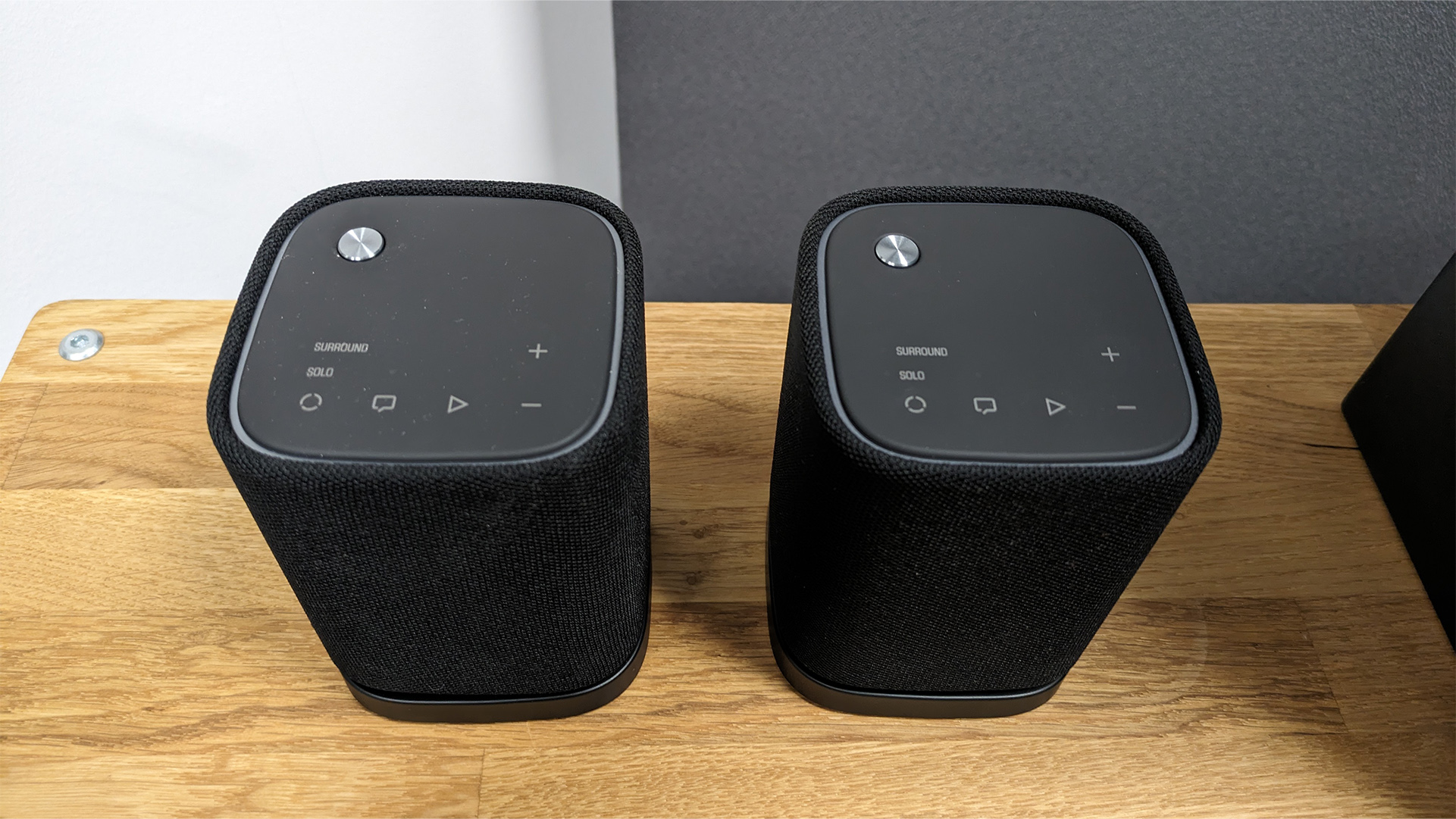
The components in Yamaha’s True X soundbar system combine well to create a cohesive and enveloping soundfield, sounding exciting and detailed with both movies and music. There are beefier packages available, but for smaller spaces and the price, this combination offers a satisfying listening experience.
SCORES
- Sound 4
- Build 4
- Features 4
MORE:
Read our Samsung Q990C review
Also consider the Sennheiser Ambeo Soundbar Plus
Read our Sony HT-A7000 review
Best soundbars: options for every budget, recommended by our experts







